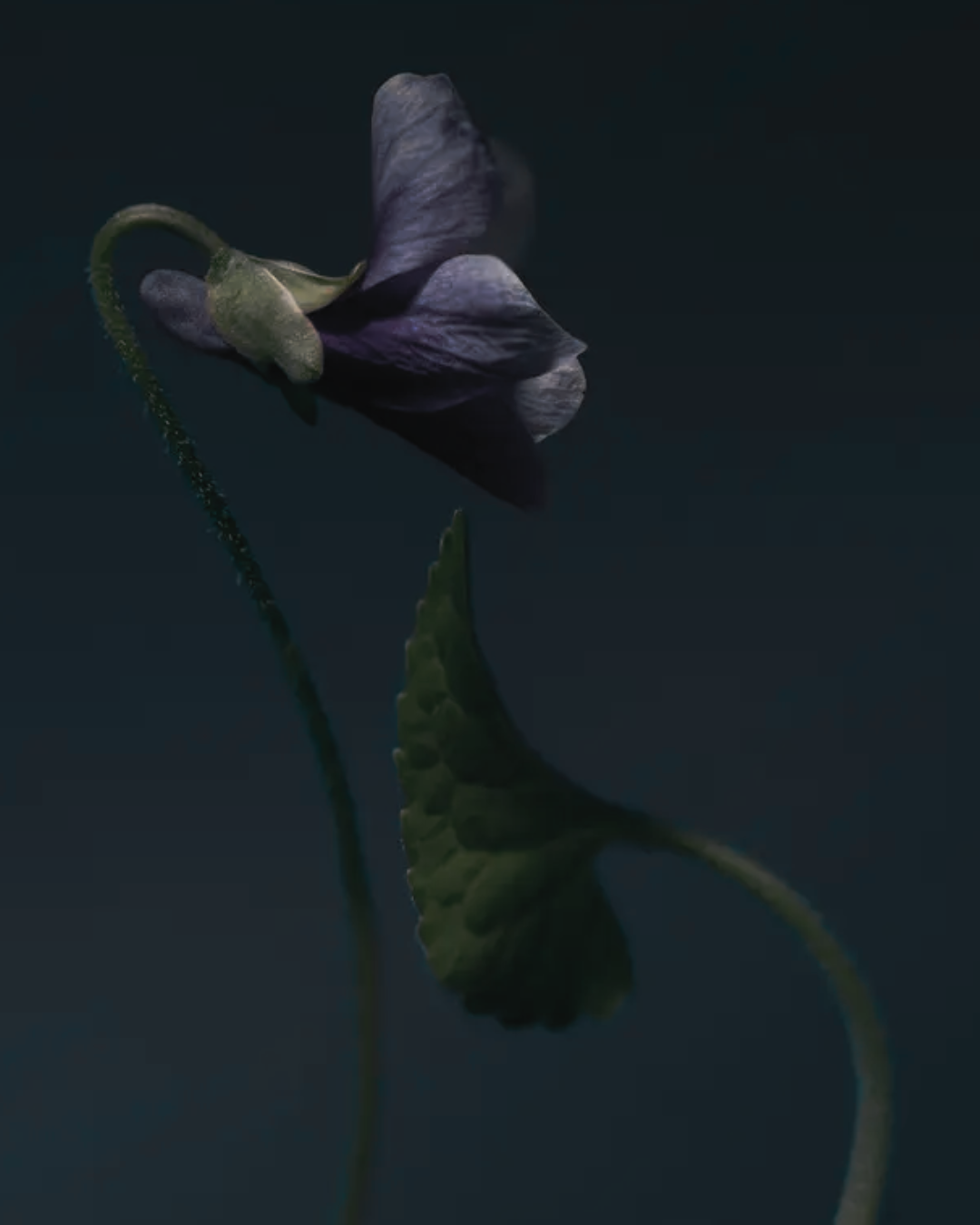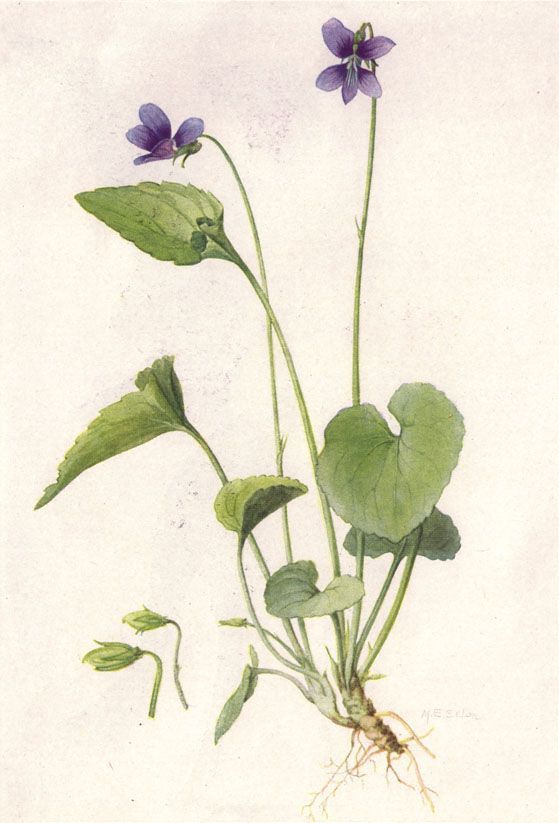Violet typically conjures grandma’s sickly sweets and powdery, overwhelming perfume. Its true history is far more exotic.
Violet leaf is sourced from the heart-shaped greenery of the violet plant. Moving through Mediterranean woodlands where violets grew wild in shaded groves, ancient gatherers would search for the fauna over the flora. While the layman coveted the flowers for their powdery sweetness and legendary modesty, the truly enlightened understood that real treasure lay in the foliage — leaves that released entirely different personality when crushed between knowing fingers.

Unlike violet blossoms with their almost edible sweetness, the leaves offered something more complex: green, cool, metallic, evoking crushed stems still damp with morning dew, rain on marble, the particular clarity that comes after storms have washed dust from stone surfaces.
Follow violet leaves through Greek mythology, where they represented more than simple modesty. Io, transformed into heifer by jealous Hera, was said to feed on violets that sprang from earth wherever her tears fell. The leaves absorbed her sorrow, transforming mortal grief into something approaching divine melancholy — beautiful, necessary, impossible to ignore.
Medieval herbalists prescribed violet leaf for "overheated blood" — the condition that afflicted those who spent too much time in cities, too little in green spaces. Crushed into pastes or steeped into cooling waters, the leaves became medicine for bodies that had forgotten their connection to life.

But observe violet leaf's genius in ancient perfumery: its ability to provide breathing space within dense compositions, to create pauses that made other notes more appreciable. Like silence between musical phrases, violet leaf gave complicated scents room to develop, prevented them from becoming overwhelming walls of fragrance.
Persian perfumers called it "the diplomat" — the ingredient that could mediate between warring elements, that made rose and jasmine coexist peacefully, that allowed fruit and resin to share space without conflict.
In monastery gardens, monks cultivated violets for their leaves as much as their flowers, understanding that contemplation required the kind of clarity only green things could provide. The scent that cleared minds clouded by too much incense, too many prayers whispered in enclosed spaces.
In FIG MILK, violet leaf serves this same essential function — the shadow beneath fruit's brightness, the coolness that sharpens fig's lush sweetness and coconut's creamy richness. It evokes stillness of shaded groves where handmaidens might wait for queens to summon them, the hush before blossoms open and attention shifts to more obvious beauty. The clarity that makes everything else more beautiful by contrast.
